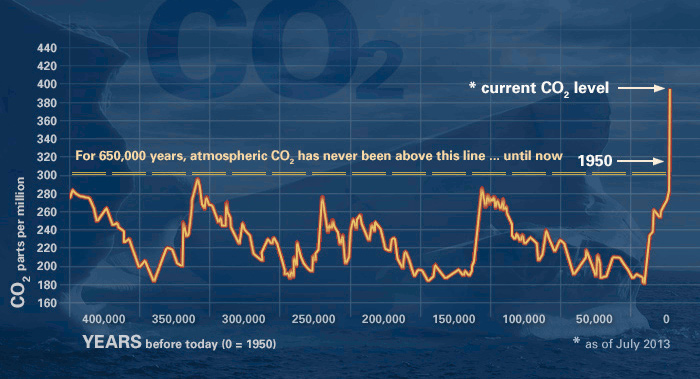
Trudi was unhappy with her husband. This had happened before, in Germany, with a young draftsman from Dresden who got her pregnant and reluctantly married her three months after their son was born. They were barely out of their teens and, as the boy’s father would put it in a sorrowful letter a decade later, too young to be grown ups. Trudi moved on in less than a year, leaving the baby with her parents.
She got a divorce and married a merchant who had ambitions of living in America. They made the crossing to Ellis Island on the Stuttgart, a new steamship that held a thousand passengers, four years after their wedding. Trudi’s little boy stayed behind with his grandparents, ignored by his father and unwanted by this other man in his mother’s life. He has his own story, about deserting the German army during WWII and being executed by a firing squad.
Now, two years later, Trudi was unhappy with this husband, too. She said he became demanding and abusive and sometimes hit her, and refused to even discuss her request for a divorce. When he finally filed for one some time later, he complained that she “willfully, continually and obstinately deserted” him. Whatever her reasons, that much was certainly true. On their sixth wedding anniversary, she packed up her things and left. She had found another man, again.
This one was a violinist who played in the concerts Trudi had been going to with her cousin Elsie, who had moved to New York from Germany a year earlier. The ladies had been enjoying some evenings out on the town, much to the annoyance of Trudi’s husband. They went anyway. Elsie’s husband played in the concerts alongside the violinist, and it was he who did the introductions.
What was it like, on the eve of the Great Depression in the winter of 1927, for the young German woman with a wandering eye and a son left on the other side of the Atlantic to meet this handsome dark-haired musician with Swiss immigrant parents, very prim and Catholic, and a studio for violin lessons? We cannot know, because they are both now gone and all we have are a few recollections Trudi left behind in the memory of the child she conceived with the violinist a few weeks before she packed those things and left to start a life with him.

When the midwife came to Trudi and Bill’s apartment to help give birth to my mother in 1928, Bill the violinist had also become Bill the driver, because his violin students were dropping out. The timing is a bit fuzzy here; my mother was told she was conceived in the backseat of my grandfather’s taxicab. Was he already driving a cab when Trudi met him, or did that happen in the months to come? It makes for a good story, anyhow.
Mom also heard some good stories about a famous performer I will not name whom Bill chauffered around the city. This was another driving gig, better than just being a cabbie: Drop off the performer while he entertained one or another of the women who pawed at him in hordes, and discreetly pick him up later. There was a lot of the sort of thing going on that resulted in my mother, it seems.
Her childhood was quieter than all this. She spent most of it living with her parents—Trudi had finally found a man for the long haul, till death would they part—at her uncle’s house. Despite the stock market crash of 1929, Bill reopened his music studio and got active in the old orchestra. He also qualified for the New York Philharmonic, which led to the highlight of his career, a solo violin performance at Carnegie Hall. I grew up hearing him play that violin in his room at our house, an old man full of memories. He was my mother’s best friend.


Another story, about that: My mother was sixteen years old when she took a bus to the subway for a date rollerskating with a sailor she’d met once. She was terrified when she got on the subway, alone, and surprised that her parents hadn’t objected. Then panic, as she skated around the rink realizing that the sailor was never going to show up and thinking about the long ride she’d have to make, late at night, to get back home. Then a hand on her shoulder; it was her father. “No wonder they didn’t try to talk me out of it,” she said. Her father was keeping an eye on things. Her mother, too. “I looked at the side seats and saw my mother sitting there watching. Dad was a good skater. We did all the dances. After we left the rink, Dad stopped at a place where we had ice cream Sundaes.”
When Trudi lay dying of cancer just eight years later, she said to my mother, “People will still eat ice cream cones.” I think about that, and the grandmother I never had a chance to meet, when I eat one myself.

My mother was not quite seventeen when she moved, grudgingly, with her parents to a little bungalow on a leaf-canopied dirt road in upstate New York. I remember it well from early visits to my grandfather: a screened-in front porch and one all-purpose room behind it, one bedroom, and a toilet in the basement, flushed with a bucket of water. Bill and Trudi slept in twin beds in the attic. It wasn’t much of a place for a teenage girl from the city. But a long arc of her life, and mine, would trace from a farmhouse down at the end of that rutted old road.
Trudi went to the farmhouse to buy a cooked chicken, and there she once again found herself eyeing a handsome, dark-haired young man. She wasn’t interested in wandering from her marriage to Bill—it was a happy one that had been in progress, officially now, for a dozen years. What she said when the young man’s mother introduced him as her son Ed, just back from the war, was this: “Now that is for my Mary.”
Mary and Ed were married eight months later, in the spring of 1946. She wouldn’t turn eighteen until summer. They would have four children; I was born last, decades later.
Art and Ambition

My grandfather didn’t just play the violin and drive a cab and rescue Mom from being stood up on dates. He was also a camera bug, taking photos with his Kodak Brownie and developing the black-and-white images in a darkroom at home. His daughter spent a lot of time in that darkroom, with him and on her own, too. Bill had to lock up his photographic paper because she went through it too fast. It was made with silver, and not cheap.

In her twenties, she published an article with some photos about being a young wife living in a trailer. Her portraits were getting noticed, and someone asked her to be a “following photographer” at a wedding. This was still a fairly new concept: Instead of the participants just sitting down for poses in a studio, the photographer would go to where the action was: the bride’s home, the church, the reception.
The gear for this undertaking, she recalls, “consisted of a heavy bulky press camera equipped with a large metal flashgun, film holders that each held two 4x5 black and white sheets of film, and No. 2 flashbulbs the size of regular lamp bulbs.” She lugged all that stuff into the man’s world of 1950s photography, returning with a few carefully framed exposures to develop herself in the darkroom.
It was exhausting she said, but fun. “Once my camera was in my hands, there wasn’t time to think beyond creating a love story through my lens.” The photo processing was time-consuming and added more responsibility. But she found it gratifying to see “the finished wedding album. It was a beautiful product of such personal nature to present to a happy client. So when another request came, I went ahead again.” And again, and again, building a business that she would run, with my father joining her as a partner, for the next fifteen years.

Mom is a visual artist who made a career out of her gift for framing images in her mind and then expertly exposing them onto limited frames of film. But running Lakeside Studio called for a lot more than that.
She was an event fixer who took care of essential little details during all those weddings and receptions. That started with the very first wedding, when she calmed a crying mother of the bride and used some rubber bands to shorten a ringbearer’s shirtsleeves, fitting them under his jacket. Mom usually helped the brides with their wedding gowns. They were comfortable in such intimate settings with this woman as their photographer.
And she was a skilled technician who equipped herself with the best equipment available, who knew how to operate and care for it. When a smaller camera came on the market with a 2.25 inch format that would work with the exciting new color film, she bought two of them. There was always an extra of everything for backup; Mom didn’t like having dreams about catastrophic equipment failures on Friday nights. This was capital investment for a serious professional operation: The Hasselblad 500c single-lens reflex was the best you could get.
I remember the thunk and whine of that big shutter marking each careful shot in the studio as Mom leaned over the viewfinder and Dad stood off to the side, watching the people whose heads and arms and smiles he had just helped assemble into a perfect pose. He brought his own expertise to the partnership; one of his strengths was posing the subjects while keeping them happy to be there sitting on stools under the bright lights. “Did you know it takes more muscles to frown than to smile?” I heard him say a hundred times, and still don’t know if it’s true. But smile they did.

How many kids get to watch their parents work together as respected and mutually respecting partners, making a good living right there in the house? I’ll never forget the acrid smell of hot studio lights, the forest of shadows they cast on the walls, the thickness of their big black cords snaked along the carpet. The crisp rustling of wedding gowns as Dad sweet-talked their wearers into sitting up just a bit straighter, with their heads turned just so. The sound of Mom laughing with mothers of the brides.
They would wind up photographing almost 3,000 of those brides. One Saturday during their glory days, with each of them taking photos separately and some freelancers helping out as well, their tally was seven weddings. They would wave to each other from churches on opposite sides of the street. The local newspaper’s bridal section was pretty much given over to the work of Lakeside Studio.
Before any of that could happen, though, a young woman in the 1950s needed to believe in herself as an artist and entrepreneur, to assert that she was not just another pretty housewife tidying up the kitchen until her husband got home. When she went to City Hall, the clerk grinned at her and asked, “You want a photographer’s license?” She paid the fee and took the paperwork from him, and he said, “I give you six months.” She did see him again, while photographing his own family members’ weddings.
When she and Dad finally sold Lakeside Studio and moved to Arizona, her second act was to manage a portrait studio. There she photographed Ronald Reagan, Dolly Parton, countless high school seniors, food, and a Rembrandt she found unimpressive. Sometimes I would ride my bike to the studio to see her after school, and then, when I could drive and wanted to use the car, to give her a ride home. She had samples of her work hanging on the studio walls, and my favorite—for some reason—was a blown-up shot of Dolly in a glimmering white outfit that must have been spray-painted on for her concert.
Story and Spirit

Mom viewed the wedding album as a story that became a work of visual art. Her aim was to capture “all the beauty and love of the moment” for the bride and groom, especially the bride. She loved a good story, and she knew how to tell them in words as well.
An example of that is her 1999 book Twice to Freedom about Dad’s experience as a prisoner of war in WWII. (He met and fell in love with the daughter of a German immigrant less than six months after escaping from German captivity. These parents of mine were an interesting pair.) Dad would occasionally get to telling his war stories and we would sit quietly and listen, not wanting to interrupt what was a rare and fickle thing.
Mom was always fascinated by the history of the war and wanted to record Dad’s part in it, but he never shared anything about it with her except these verbal stories. When she found some notes he was writing, she typed them out and put them back. He continued writing, and she continued typing, adding a narrative of her own with photos and historical references. They never talked about the book until boxes of its first printing had piled up in the house (it sold out) and he finally read one. He sent her a signed card in the mail: “Wonderful. Fantastic.”

Dad could be trying at times. I think Trudi would have put him in his place and kept him there. There was plenty of love between him and Mom and me, though. As a privileged late arrival to the family, I was fortunate to have a wonderful and supportive father who drove me across town to buy electronic parts and radio equipment and stood on the house roof helping me string up antenna wire. He was in his late forties when I was born, and I told him he needed to last a while. He did, for another 35 years.
There was something else about my father that arrived late into the family, an unseen entity that followed slowly behind from that farmhouse where Trudi first spotted him. It was at turns a force of joy and beauty and fear and pain, forming me and shaping me, giving me the view I would hold of the world for the first forty years of my life. It was the Apostolic Lutheranism of Dad’s Finnish parents, a demanding and fervent faith they brought across the Atlantic and practiced with a few thousand others having their own origins in the land of Lars Levi Laestadius. A handful of them lived in Ulster Park and they held services in homes. There was sin and forgiveness in abundance, and much wailing about people’s transitions from one to the other.
After twenty years of marriage to a moderate Catholic, Dad returned to the exclusivist Protestant religion of his youth. Contention sparked into flame about things like their teenage daughter’s earrings and the television in the living room. With no change on her part, Mom was one of the worldly now. She entered a period of soul-searching, questioning the clergy at various churches where she did her weddings, spreading their pamphlets out on her bed. Finally she asked God to point the way, and the answer she thought she heard had her convert, enthusiastically, to Dad’s Laestadianism. The television went away.
It’s not my place to summarize my mother’s current beliefs, half a lifetime later. Frankly, I don’t know or care what they are. What I do know is that she made quite a splash in the little pond of American Laestadianism (Heideman branch), just as she did with photography in upstate New York.
There were front-page articles in the Greetings of Peace with this eloquent former Catholic woman (what an exotic combination!) writing about the sense of peace and joy she felt at finding God’s Children. There were long letters back and forth with prominent ministers during a time of schism in the early 1970s. And there was a song—a beautiful one I sang many times along with hundreds of others in church, before a committee somewhere changed the tune and lyrics and ruined it all—about her heart longing for Christian love. She wrote it in the car on the way back from services one evening, full of feeling: “God’s children here blessed from above / Here in the flock on God’s Holy Mount / I find peace when washed in the fount.” And just listen to the biblical poetry here:
No ear has heard nor an eye has seen
The endless joy of which I dream
To Paradise leads the narrow way
Keep me in Faith, God, to thee I pray.
She’s written a lot of private musings that express this same faith in God, even as some people in the old church scratch their heads and wonder about whatever happened to Mary, who married an unbelieverafter Ed died and is now living with another one. Like this stanza from a poem “Our Senior Years”:
Moonlit nights and sunlit days
Shining fields golden grained
All of God’s wonderful ways
The joy of life retained.
In another poem, “Life,” she writes about standing “on the threshold of eternity,” turning around to lift her eyes to “the light from Heaven above.” Her words tell of faith and praise and a patient hope. This is from “I Want to Walk the Narrow Way”:
In the quiet all through the night
With many thoughts running free
I’m thanking God for all
The blessing that he gave to me.
She isn’t all just sentimentality and flowers, though. I smile at the memory of a story she liked to tell about a gathering of their little congregation of Apostolic Lutherans. One of the elders was admonishing her to humble herself and repent of some sin, or more likely, a false spirit that was being blamed as the “root” of many sins. At the time, false spirits were running rampant across Laestadian Christianity—Heideman branch, non-Torola—and the discerning elders of the Ulster Park congregation had spotted their share. This gentleman was enamored with the sound of his own voice (I heard it plenty myself), and his rebukes were going on and on. Finally, Mom said, “If you’ll shut up, maybe I’ll repent.”
Repentance, perhaps, but humbling herself? She might not have been so good at that part.
Love and Loss

Mom and Dad made it 57 years together. She couldn’t stand to be alone after Dad’s death, and Match.com had itself a new customer. She came across the listing for a man whose wife had died three days before Dad. Off they went—talking on the phone, meeting at a restaurant for lunch. “It was so comfortable with Joe,” she writes. “We held hands and shed tears for our lost spouses. This led to many more ‘dates’ and we knew it was right for both of us. We couldn’t stay apart.”
She married Joe in 2005. I was still so firmly stuck in my old church’s judgmental views that I didn’t attend their wedding, because she was in the Laestadian faith and he wasn’t. One should not be unequally yoked with unbelievers and all that. I wish I hadn’t been so damn righteous. Unlike me, some of her family and friends who remained in the church behaved decently about it: They were there, and they have my admiration for it.
I met Joe after the wedding on a visit down to Arizona. We went out to a buffet for dinner, and when Mom got up for some dessert, he looked at me with his big bushy eyebrows raised. “Well?” he asked. Did I approve, finally? I stuck out my hand. “Joe,” I said, “I give you my mother’s hand in marriage.”
They were a couple of doting old lovebirds, Joe and Mom. “It’s our new beginning,” she wrote in another poem, “when these vows are said. Wedding bells are ringing, but it’s my heart instead.” They had a wonderful marriage, both of them respecting the memory of their first spouses and loving each other just the same. And then she found him dead one day, the way of all flesh, and she grieved over another husband outlived.
He brought to me joy each day
His sweetness and tender love
It was happiness in every way
A gift from God above.
Their five years together was much too short.

Now Mom is with another companion, Jack, a smart and interesting man. Her memory is fading and his sharp mind helps keep things on track. They sit in his trailer with their two dogs and watch their remaining days go by. She is coasting to the quiet finish of a long life well lived.
I sat beside her a couple of months ago as she leafed through an album I’d made for her of my own favorite photos. The call of the camera seems to have continued a bit in me, just as a hobby. She commented on composition and lighting, pointing to this and that, saying how pleased she was that I’d taken up photography. I looked at this remarkable woman, at her wispy hair and that big nose she left me with, and my eyes welled up with proud and fond and grieving tears.
You’re amazing, Mom, and I love you.




















































